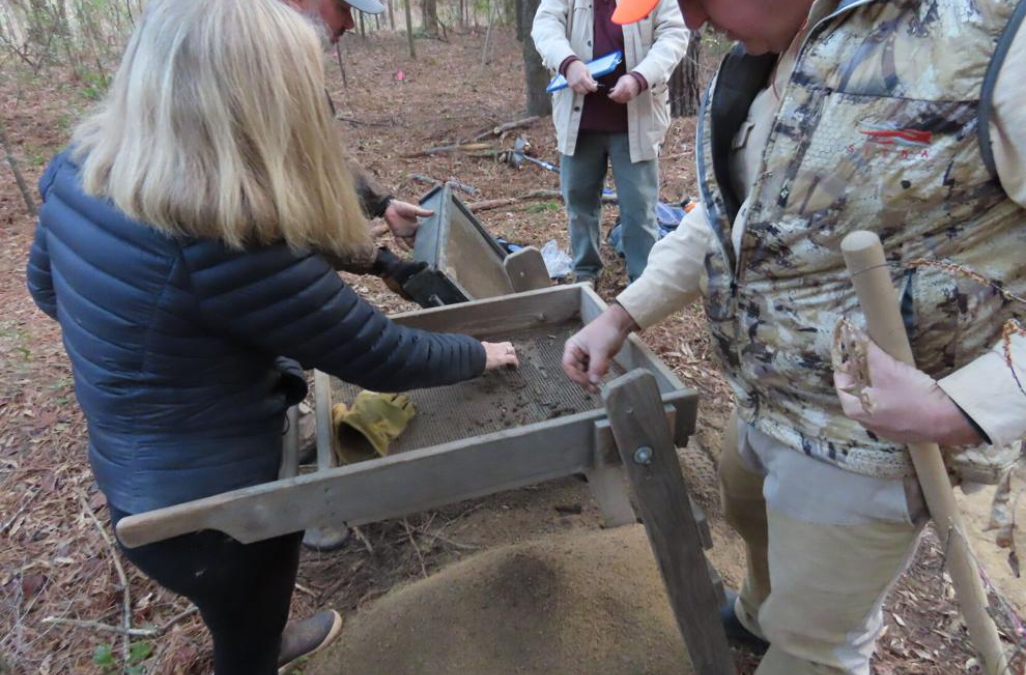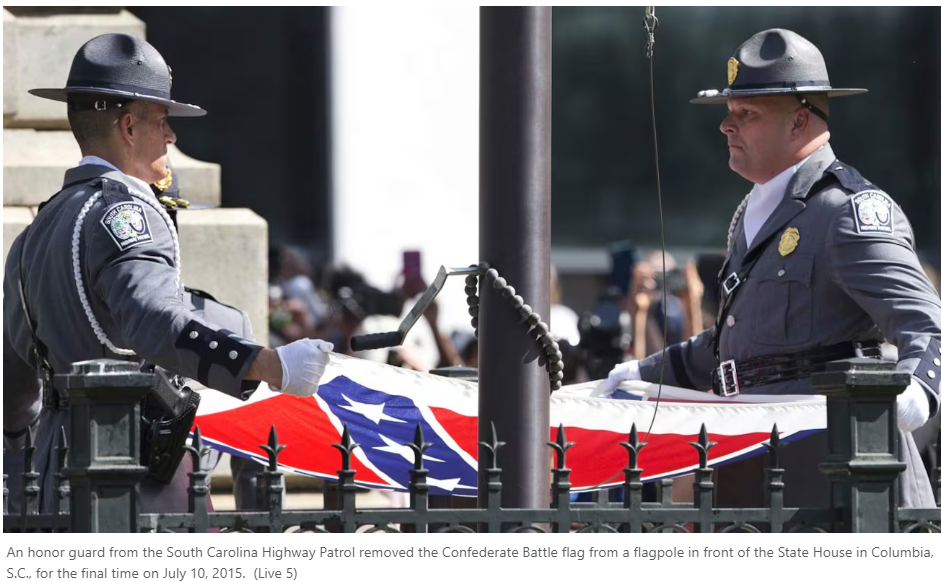SOUTH CAROLINA: Revolutionary War-Era Site Sheds Light On Frontier History
FLORENCE — On a late afternoon in early January, cries of delight echoed through the woods of the Upper Pee Dee River.
A small team of volunteers searching for artifacts from the Revolutionary War era had found an unfired musket or rifle ball — a rarity in the world of archaeology. The volunteers passed the ball back and forth, hefting the heavy lead and running their fingers along the uneven surface.
When done, they placed the ball in a brown paper bag alongside the many other artifacts they’d found — glass, pottery, pieces of pipe, nails, more musket and rifle balls, a padlock, even British coins, among other things.
To the untrained eye, these woods look no different than any other. A passerby could walk through without any idea that it was once the heart of a thriving backcountry community in the mid- to late-1700s.
This swath of land on the riverbank — part of the Cashaway community — is the latest focus for the Archaeological Institute of the Pee Dee.
Buried beneath the dirt, the organization has found fragments of daily life during the Revolutionary period. They are more pieces of the puzzle as archaeologists seek to reconstruct the history of the South Carolina frontier, said Ben Zeigler, the institute’s chair.
The promise of excavating a community that was at its peak during the Revolutionary War makes the site all the more tantalizing.
“Our hope is eventually, if we put this landscape back together, and we find the mills and the roads and the stables and the enslaved communities, we’re gonna have a view of all the different components of what this community was made up of,” Zeigler said.
In the 1700s, settlers sought out independence and religious freedom in the forested and swamp-ridden backcountry of South Carolina, according to Zeigler. As their numbers grew, the settlers pushed out the Native American tribes that had for centuries called the banks of the Pee Dee River home.
In many ways, Cashaway was typical of the communities that emerged up and down the Pee Dee.
Several hundred people likely lived in the area, many of whom were enslaved, Zeigler said. Georgetown — the main metropolitan center in the region — was two days away by horse.
On the riverbanks, the settlers conducted their working lives, Zeigler said. They built stables, transported goods up and down the Pee Dee, and farmed corn, hemp, flax, rice and indigo. Enslaved Africans also lived in the bottomland.
On the bluff overlooking the river — far from the flooding, mosquitoes and malaria of the swamp — the settlers built their homes.
While the community thrived during the 1770s and 1780s, it quickly collapsed as change overtook South Carolina. Amid the cotton boom, and as population centers moved away from the river, the communities faded away. By the end of the 18th century, it was gone, Zeigler said.
Eventually, the forest reclaimed the land.
“You hate to use the term colonial Pompeii, because it’s not completely destroyed by volcanoes,” Zeigler said. “But this is also a landscape that was left behind.”
In early January, workers focused on a small patch of land they believe was the home and workshop of Jolly Webb.
Webb was a handyman and contractor in the Cashaway community.
He made shoes and buttons and spoons, Zeigler said. He built indigo vats and at least one home. He had two daughters and owned a single enslaved African, named Dio.
Webb died in 1793.
Unlike the large landholders of the area, who kept diaries and other written records, there is little documentation about Webb.
“This is a rare opportunity to see what an 18th-century working man lived in,” Zeigler said.

Lane Gilpin (left) and Jay Ham examine their sieves for any potential artifacts. The two were among a number of volunteers searching for clues at the site of a South Carolina frontier community on the upper Pee Dee River. Seth Taylor/Staff
A small group of volunteers — some professionals, others simply local history enthusiasts — spread out across the patch of woodland for two days in early January. They dug small holes a few inches deep at regular intervals. They sifted the dirt through a sieve, collecting artifacts, recording them and placing them in labeled paper bags.
The goal, said Chris Judge — an archaeologist at the University of South Carolina Lancaster who helped lead the dig — is to find the boundaries of the site. Where does evidence of human activity begin and end?
Based on the data the archaeologists collect from this dig, they will decide where and how to dig next. It will be among many steps in the yearslong process to explore the area, which includes not just Webb’s home, but the homes of multiple influential landowners and the church they attended.
Already, what they’ve found has helped historians reimagine the landscape and the people who lived there.
For example, the volunteers discovered a handful of spent ammunition. What could that mean? Could a small skirmish have occurred here? Could Colonial forces have set up camp in this area? Maybe Webb sympathized with the revolutionaries and forged ammunition for the local militia. Or maybe the balls are simply the remnants of a successful hunt.
Zeigler hopes the site can shed light on what the Revolutionary War experience was like for the everyday people of the colonies, far from the battles and ideological debates that fill textbooks today.
The archaeologists have also found fragments of colonoware, a smooth, burnished pottery that is common among African cultures. And they found a small sleeve link decorated by a “magic box,” a sort of crosshatched talisman used by enslaved Africans.
Is this evidence of a settlement of enslaved Africans? Could the link have been worn by Dio? Did he craft the colonoware, or did someone else?
The site’s potential as an enslaved community is particularly exciting, Zeigler said. These would have been among the first generation of Africans who were torn from their homes and enslaved in the colonies. Historians know little about what their life was like on the Pee Dee frontier.
And the archaeologists have barely begun. There’s much more to do to piece together the story of the Cashaway community.
“It’s a fascinating story,” Zeigler said. “And we’ve just started to scratch the surface on it.”
–postandcourier.com



